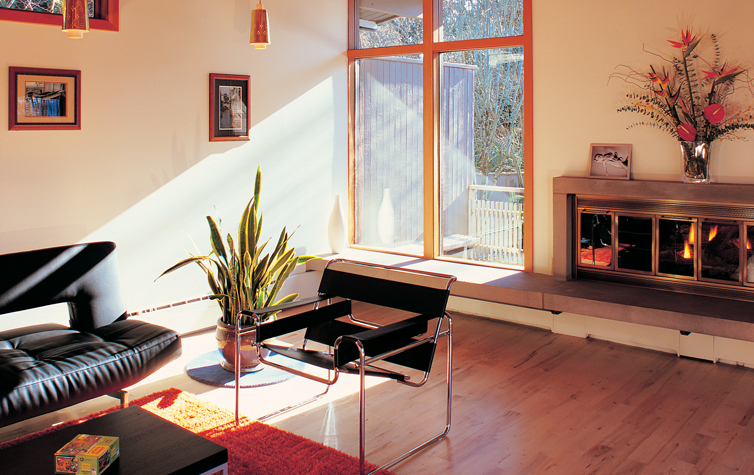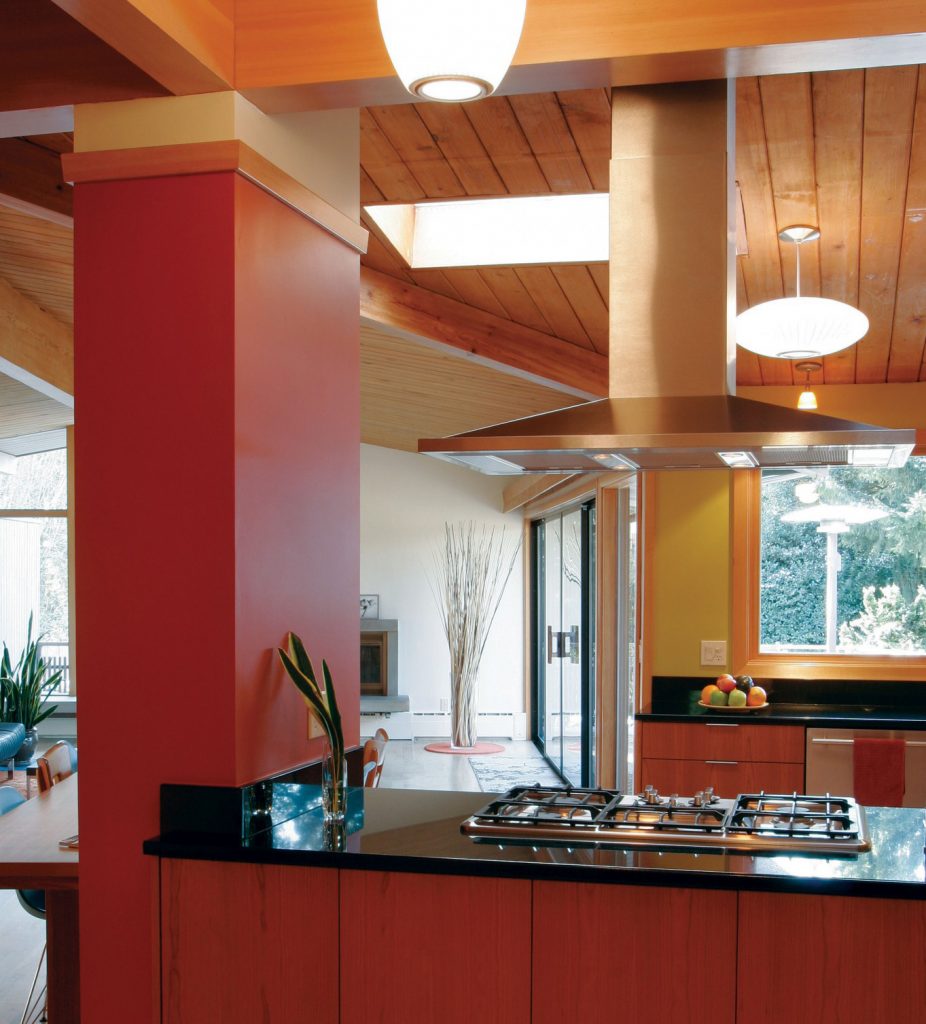
The email read: “Main bath tile: style: Feel; color: Live; size: 4.5″x24″. Main bath flooring: Marmoleum, Dutch Design MO412, Claudy Jongstra. Second bath tile accents: Candy Glass; color: Cocoa Powder; size: 1″x1″. Kitchen pendant lights: Modernica, George Nelson Cigar and Saucer” and went on through several more rooms; this was obviously the product of a highly organized mind.
The sender was Nicole Olszewski, the homeowner/project manager on the remodel of her family’s Pacific Northwest home. She showed us a fat book holding notes, receipts, drawings, samples and myriad details of the project, one she spearheaded alongside Steve Bock of GSBock Design in Portland, Ore., a guy who grew up in a split-level Atlanta ranch.
“When they first said Nicole wanted to work as the general contractor, I thought, ‘Uh-oh,’” Bock confesses, “but when she showed up at the next meeting with a notebook with dividers for plumbing, electrical, appliances, etc., I thought, ‘OK, this could work.’ She and Brett were great clients—they weren’t resistant to anything I suggested.”
The Olszewskis had a fairly typical wish list for their house search: good schools, single-story, plenty of light, a big lot for their kids and dogs to play. They just didn’t expect Nicole to find and buy it while Brett was out of town.
A sales and marketing services V.P. at the same firm where Nicole previously worked in operations, Brett, 41, typically travels three days a week. Now their lifestyle, their home and the eight-month renovation they did on it is all about the kids.
“When you have a 4-year-old and an 18-month-old, the whole point is to be able to watch them,” says Brett. “‘Ranch’ started showing up on our search filter and this house met our criterion: it’s an L, it turns its back on the street, it’s very private and conservative in the front but once you’re inside it opens up to the outside.”
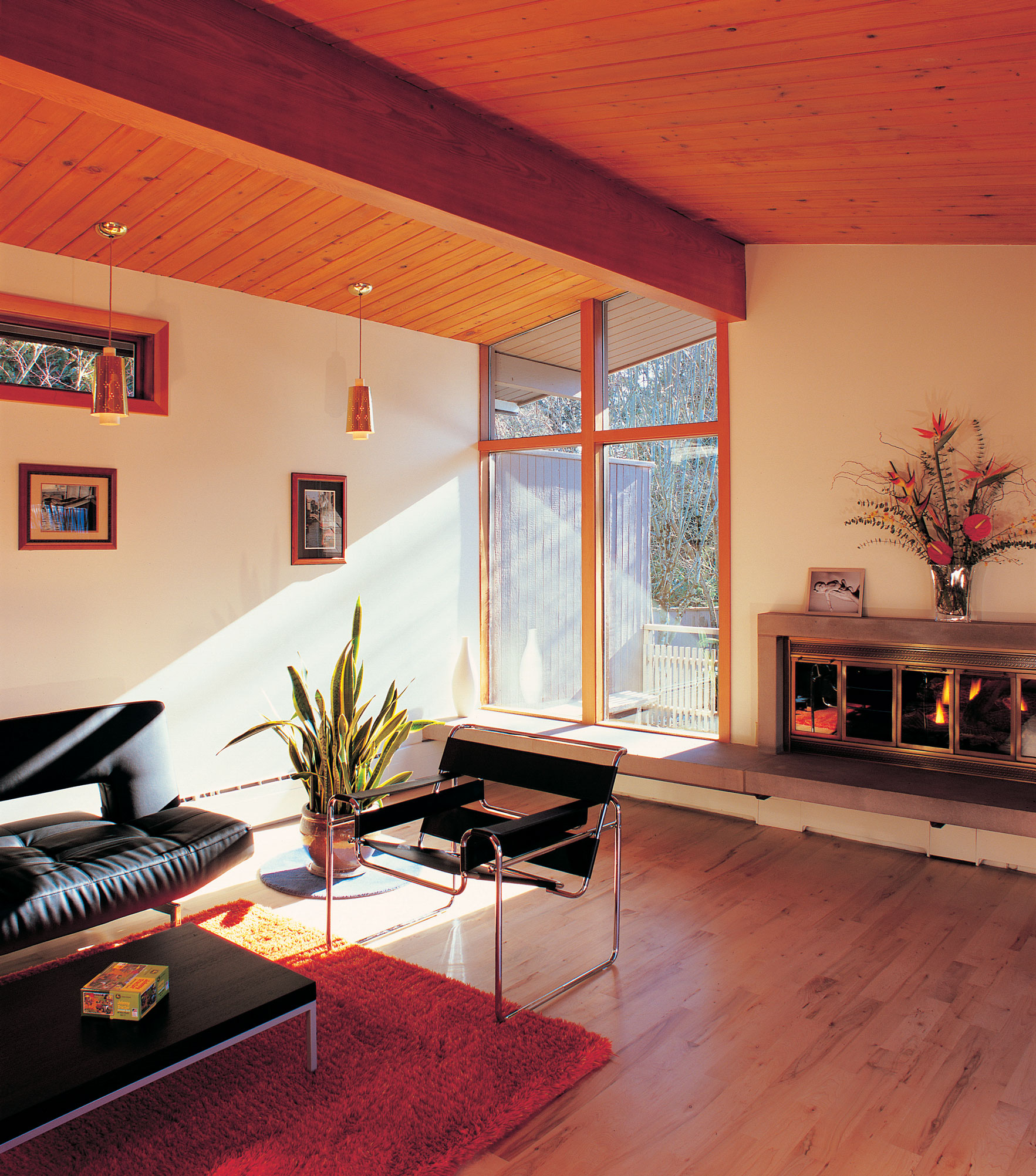
Designed by Northwest architect Robert “Bud” Oringdulph in 1958 for his lumberman brother, the custom home had huge potential in the couple’s eyes. By the time Nicole and Brett bought it in 2007, the series of doors, hallways and curtain walls—not to mention a narrow dining room addition from 1980—seemed dated to the couple.
Their fifth house in 15 years, this was the one that they were ready to sink some time and money into. They knew they needed professional help and had intentionally sought out a Realtor with a history of house flipping, thinking her resources might prove valuable. Those contacts led to both Bock and contractor Randy Chandler, who served as a consultant to Nicole and recommended many of the subs.
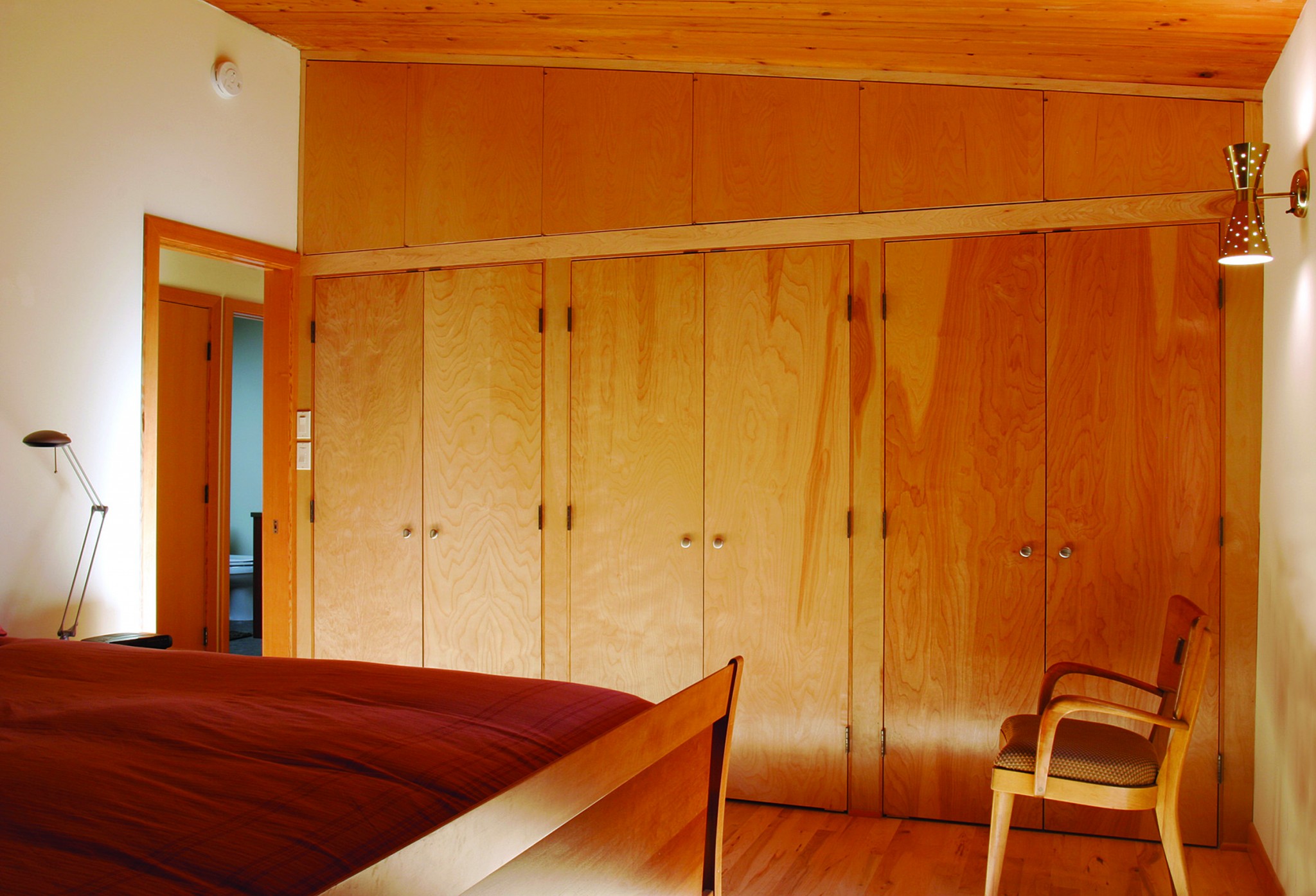
“Superficially, the original post and beam house resembled an Eichler, but all of the spaces were small, cramped and dark,” says Bock. “I knew I wanted to open it all into one big space but with discreet areas for different activities. We went through five different design iterations; we all thought number four was it, but then I did a refinement that was too good not to use.”
“The same filter we put on house hunting we put on Steve at the get-go,” Brett explains. “We went through at least a dozen books flagging things we liked; they were mostly Eichler and Frank Lloyd Wright books. We gave him some pretty heavy requirements and then we were totally open-minded. He did exactly what he was supposed to—he came back with options, three completely different initial plans.”
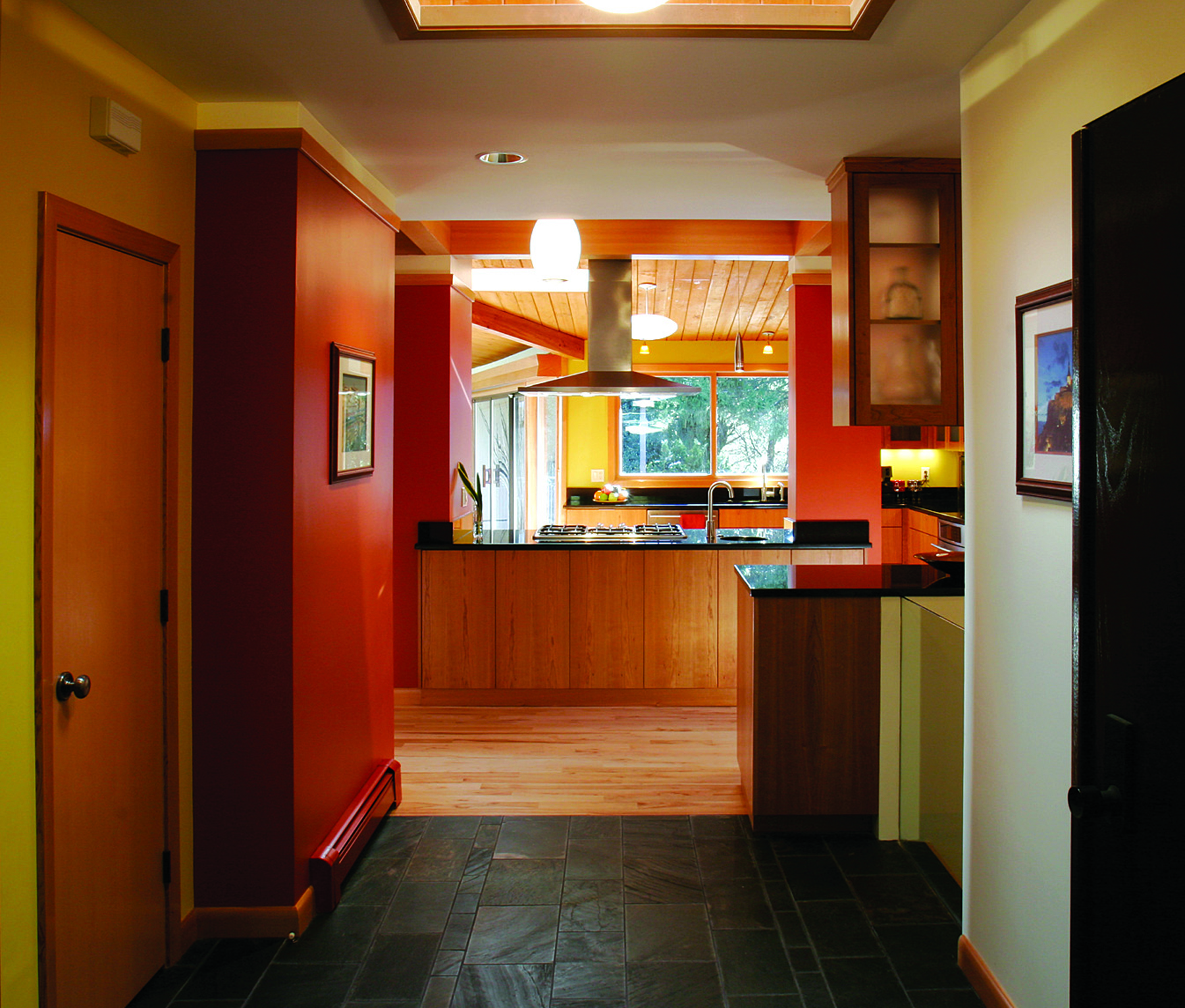
In addition to Bock’s design skills and past experience, the Olszewskis valued his private life as well. “We looked at his work and he seemed very capable, plus his status as a part-time architect and stay-at-home dad all seemed to be a good fit,” Nicole says. “Because he has two kids, he knew about patterns in a house, routines as they grow older, so that was important,” Brett adds.
Much of the house was gutted back to the studs, and posts and beams were moved, replaced and trimmed out. The stairway to the basement was opened up and the awkward front entry hall was reworked so there is now a line of sight clear through the house the moment you step in. Since Bock and Brett are fans of Frank Lloyd Wright, they favored as many built-ins as possible, but budgetary constraints meant paint accent colors replaced custom wall paneling planned for the living and family rooms.
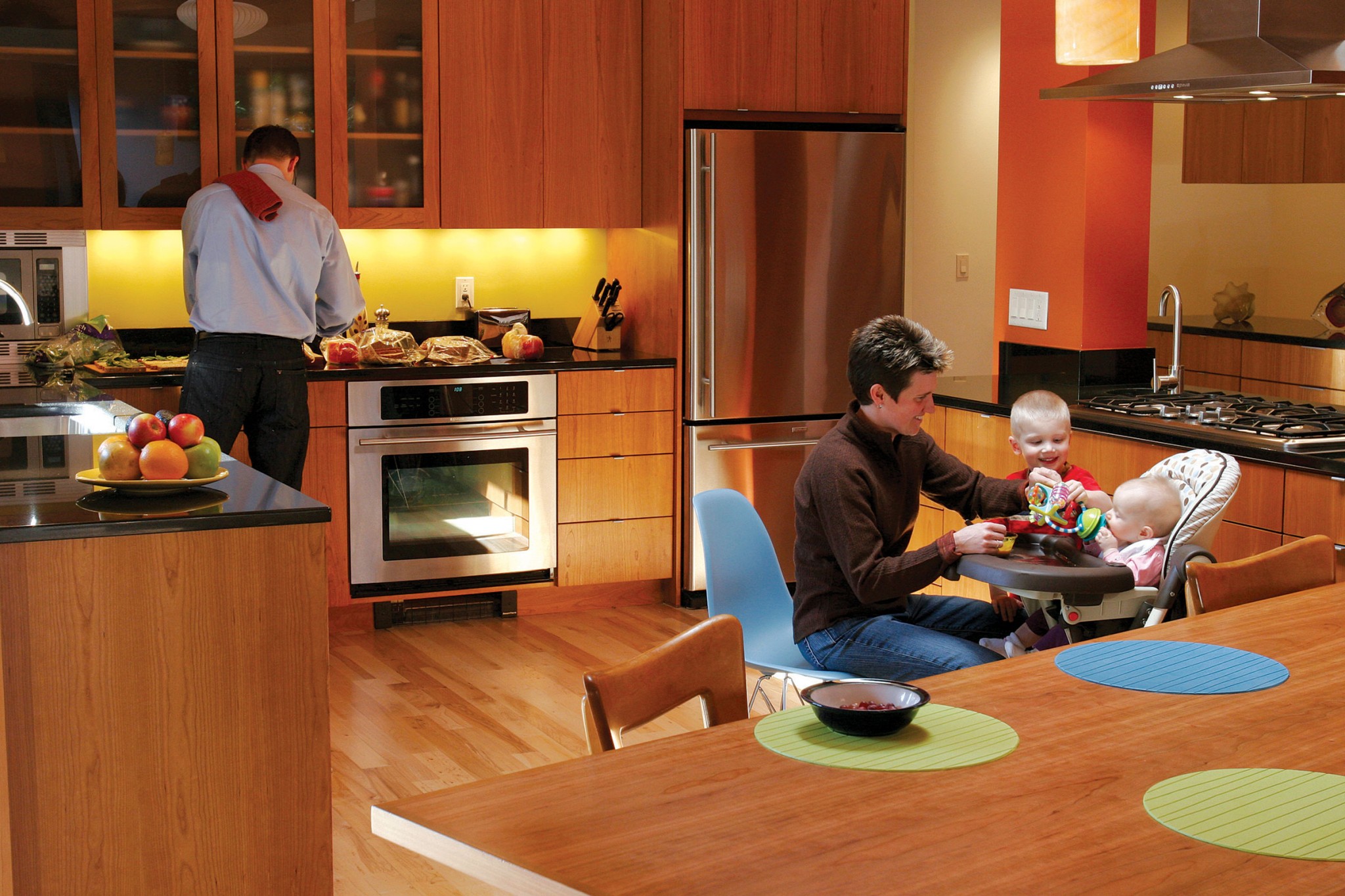
Spatial changes, the overall palette and paint colors were driven by Bock, while Nicole put his suggestions through the Olszewski filter and chose plumbing fixtures, lighting, appliances, cabinetry, counters and flooring. The couple says working with Luxe, a local lighting store, and Surface, a tile/flooring shop, was invaluable. “The kitchen wouldn’t have had nearly enough light if we went with what was spec’d in the blueprints,” Nicole asserts.
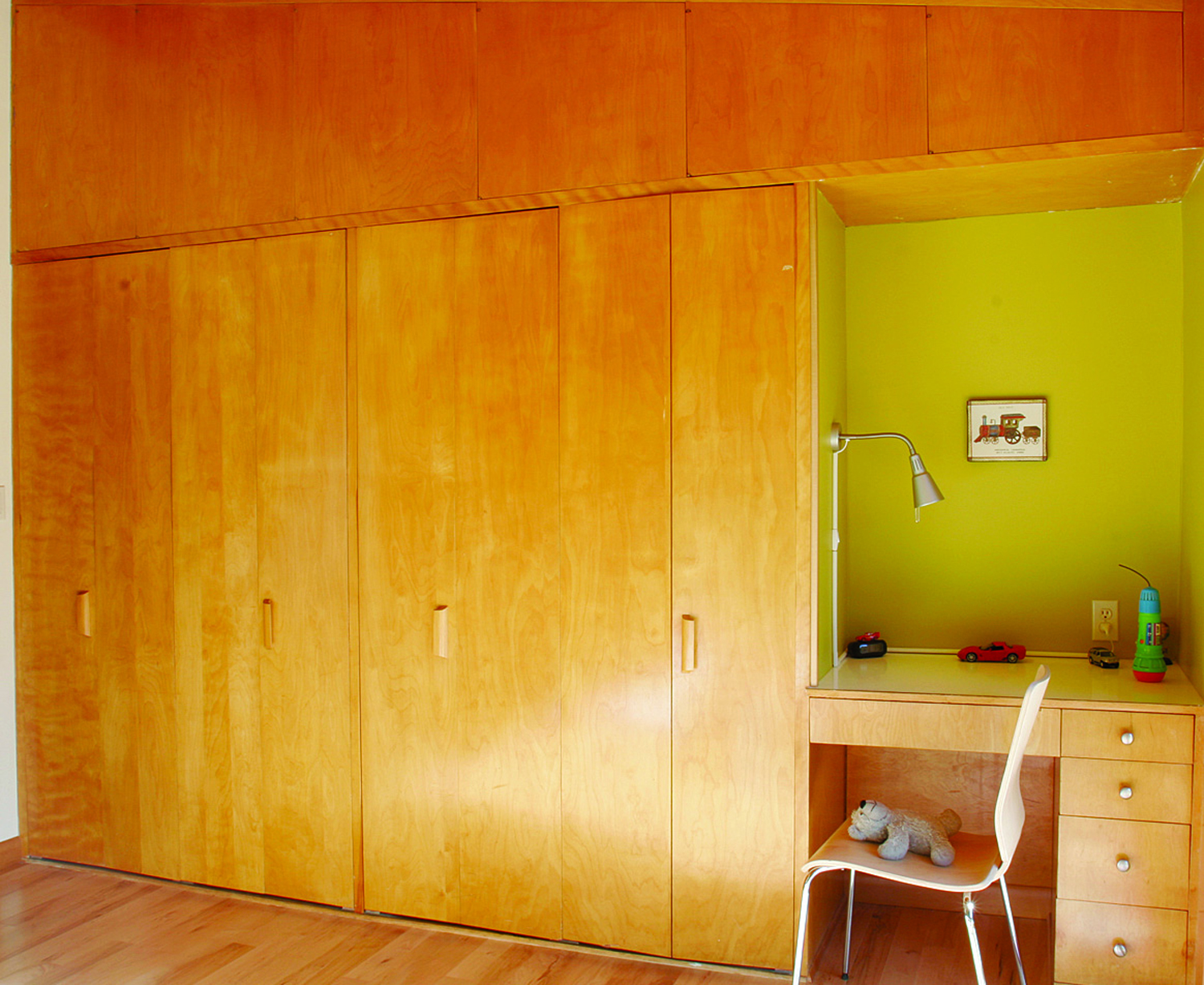
“Oringdulph built the house in the late ’50s when it was acceptable to have compartments—a door between the kitchen and the dining area, pantries, hallways—but the outside shell of the home is the same,” says Brett about their end result. “Nicole’s insight into how you get a network established made it all pretty smooth. We laughed, though—if there are five major reasons why you get a divorce, we were doing four of them at the same time: we were moving, we were renovating the house, Nicole was pregnant and I was switching jobs.”
“At first I struggled with tearing so much out,” 40 year-old Nicole says. “But then as I saw the possibilities and how much better it could be, I got over that. And we did good things: the cabinetry was removed carefully and we gave it to someone who will reuse it, and the paneling was sold on craigslist.”
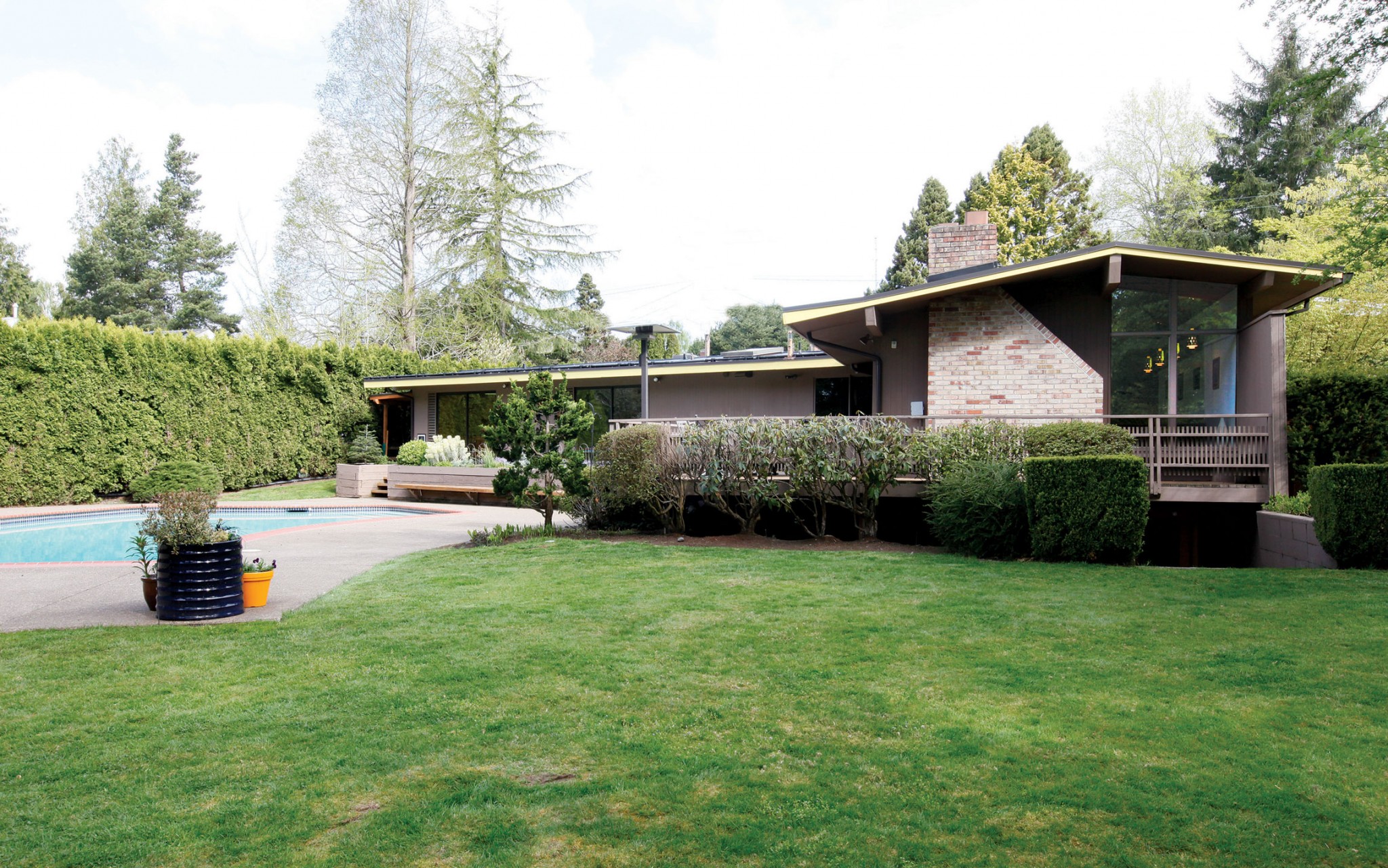
As is often the case, the home’s potential was tantalizing, and between unexpected dings like the suddenly leaky roof ($30,000-plus for a commercial grade solution) and pool upgrades (childproof fence, safety cover and solar heater), the schedule ran over two weeks. Not bad, considering. They had three budget benchmarks to hit: target: $120,000; padded for overruns: $150,000; worst-case scenario: $175,000. Of course it cost even more than that in the end.
Not long ago, Nicole ran into the daughter of the original owner, who’d grown up there. As it turned out, their married-with-kids status helped net them the home during the mini bidding war, as she wanted a young family to experience the house as her family had.
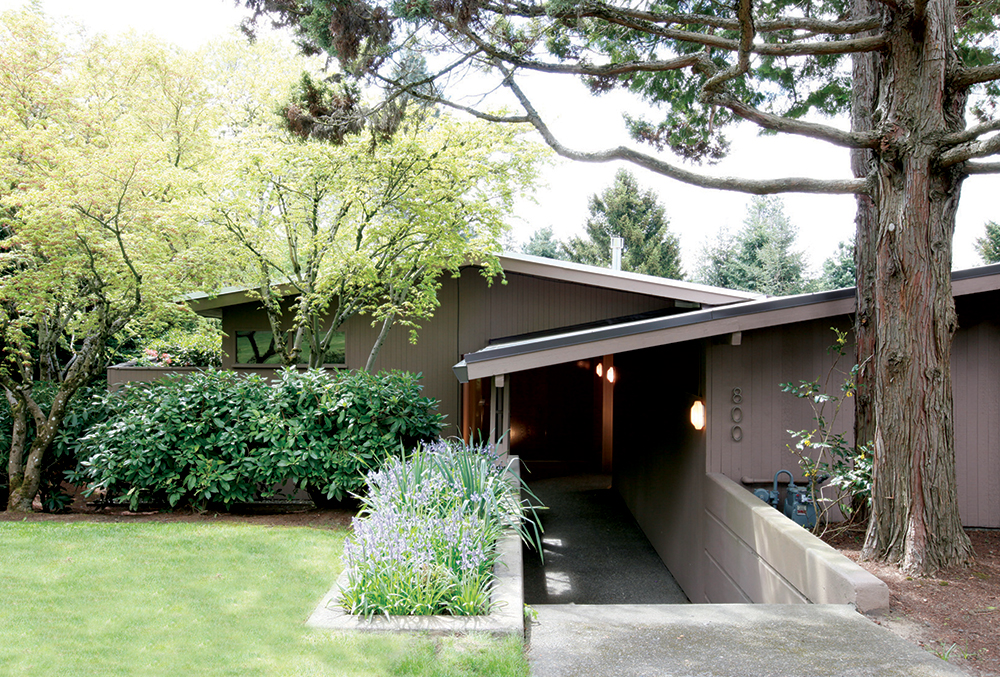
“If we were going to build a house from scratch, we’d do something similar, but we’d open it all up—that’s more contemporary,” Brett concludes. “Our driving ethos was, if we’re going to do it, let’s do it right and leave the place better than we found it.”

